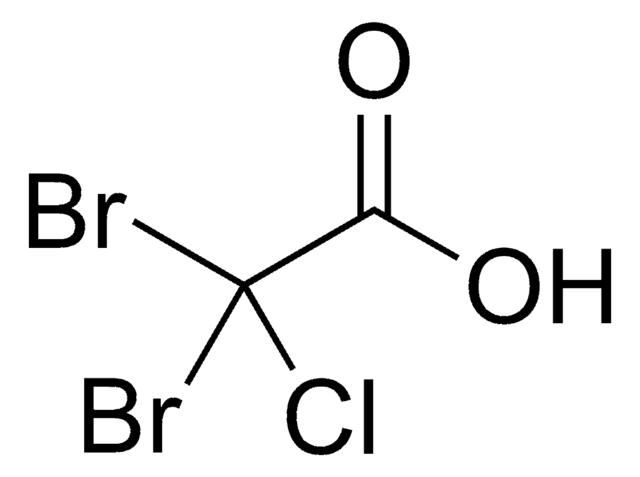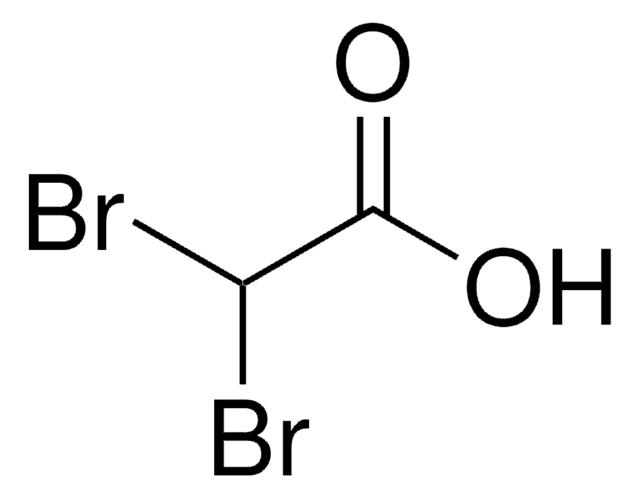442499
Bromodichloroacetic acid
analytical standard
Synonym(s):
Bromdichloroacetic acid
About This Item
Recommended Products
grade
analytical standard
CofA
current certificate can be downloaded
packaging
ampule of 100 mg
technique(s)
HPLC: suitable
gas chromatography (GC): suitable
mp
69-72 °C (lit.)
application(s)
environmental
format
neat
storage temp.
2-30°C
SMILES string
OC(=O)C(Cl)(Cl)Br
InChI
1S/C2HBrCl2O2/c3-2(4,5)1(6)7/h(H,6,7)
InChI key
XSWVFEQKZFUULO-UHFFFAOYSA-N
Looking for similar products? Visit Product Comparison Guide
General description
Sigma-Aldrich offers bromodichloroacetic acid for a variety of applications that include, but are not limited to, environmental, food and beverage, forensics, petrochemical and pharmaceutical analysis.
Application
Signal Word
Danger
Hazard Statements
Precautionary Statements
Hazard Classifications
Acute Tox. 4 Dermal - Acute Tox. 4 Inhalation - Acute Tox. 4 Oral - Eye Dam. 1 - Skin Corr. 1B
Storage Class Code
8A - Combustible corrosive hazardous materials
WGK
WGK 3
Flash Point(F)
Not applicable
Flash Point(C)
Not applicable
Personal Protective Equipment
Choose from one of the most recent versions:
Already Own This Product?
Find documentation for the products that you have recently purchased in the Document Library.
Customers Also Viewed
Our team of scientists has experience in all areas of research including Life Science, Material Science, Chemical Synthesis, Chromatography, Analytical and many others.
Contact Technical Service











